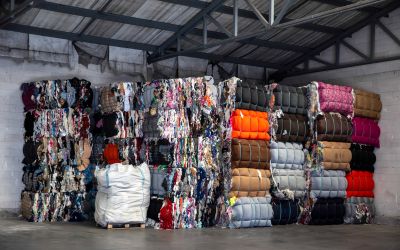BFI’s new archive film store sets reel-y high environmental standards
Britain's decomposing historic film archives will be safe from further damage as the British Film Institute completes a new low-energy sustainable storage facility in Gaydon, Warwickshire.

The British Film Institute has launched the Master Film Store, state-of-the-art sustainable storage to protect Britain’s decomposing film archives.
The building was designed by Edward Cullinan Architects and funded by £23m of government investment, plus input from regional film archives. The project sets the bar high for future archiving facilities and sustainable development, saving over £300,000 in energy costs per year and achieving high air permeability levels.
A significant percentage of the collection is volatile nitrocellulose or cellulose acetate 35mm films. These organic materials, unless stored in careful conditions, gradually break down, reacting with the metal of their containers and eventually turning into dusty and cracked remnants.
The National Archive is the largest collection of film and television in the world and was founded in 1935. It contains important records of historical actuality, including the Mitchell and Kenyon collection, the largest surviving collection of early non-fiction films in the world. Some of the films are cultural records of such importance that they have been given UNESCO Memory of the World status.
The rate of film decomposition before this facility was built was faster than the copying process, meaning that the race was on to save the national collection.
Nitrate film is also highly inflammable and difficult to extinguish. It generates its own oxygen in burning, and needs to be stored very carefully. A nitrate safety film from the BFI archives shows a nitrate fire in a tower, thrusting flames into the air like an angry dragon.
The Master Film Store is the biggest nitrate collection in the world so there was no test case for the architects. The building is comprised of six large acetate film stores and 30 smaller nitrate stores. 27 km of racking shelves will hold 450,000 cans of films.
In order to stop decomposition and ensure safety, the vaults need to be kept at -5 degrees Centigrade and 35 per cent relative humidity. Despite this demand the new building saves over £330,000 in energy costs per year, or 1,500 tonnes of carbon, when compared to the 10 separate buildings previously used to store the films.
This has largely been accomplished through significant achievements in the air tightness of the building. Regulations for new buildings stipulate that the air permeability of the building should allow no more than 10 metres squared per hour of air to leak out. The Master Film Store has achieved air permeability of 0.28 metres squared per hour, equivalent to the edge of a five pence coin, allowing substantial energy efficiency and stabilisation of interior conditions.
The building recycles waste heat from the refrigeration process and has achieved an “Excellent” rating from the UK’s Building Research Establishment’s Environmental Assessment Method (BREEAM).
The architects have also taken steps to minimise the impact of the development on the landscape, previously largely Greenfield and Brownfield sites. Badgers, bats and newts were relocated and accommodated to minimise habitat disturbance. The green roof has a soil layer seeded with a wildflower mix of 21 different species of plants to reintroduce diversity in the area following development.
This roof and the surrounding swales mitigate the effect of the development on the local drainage system.
The architects surpassed their BREEAM targets for the project and the high level of sustainability, particularly the air tightness, achieved in this building will surely prove inspiring to other architects and engineers keen to improve the energy efficiency of future buildings.






_400_250_80_s_c1.jpg)